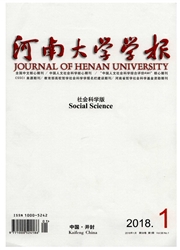

 中文摘要:
中文摘要:
在区域经济增长收敛性的研究中,大尺度的观测单元可能会忽略小尺度观测单元间的异质性特征,小尺度观测单元的采用可以改善模型回归系数产生的偏差问题,具有重要的学术和现实意义。采用1992-2010年中国339个地市统计数据,基于新古典经济增长模型的空间计量面板扩展形式,考察我国五大区的区域经济增长收敛和异质性特征,结果表明,中国五大区域普遍存在区域经济收敛,且收敛速率远高于采用传统新古典模型和省级数据的情况;收敛的速率从大到小依次为东部地区、西南地区、中部地区、东北地区和西北地区;东部地区空间溢出效应的特征不同于其他四大区域,具体表现为其经济增长方式对空间位置关系较为敏感。因此,政策决策者在制定区域经济协调发展政策时应注意改善我国技术和资本转移机制,在实施区域经济协调发展政策时需要区别对待。
 英文摘要:
英文摘要:
In the study of convergence of regional economic growth, large-scale observation units may neglect the heterogeneity of small-scale observation units, and the adoption of small scale observation units can improve the bias of model regression coefficients, and has important academic and realistic significance. This paper adopted 1992 2010 China 339 prefectures panel data and used the neoclassical growth model with the technology spillover effect and spatial econometrics approach to study the Chinese regional economic growth convergence. The results show that, the five boroughs are all convergence and the degree of convergence are much higher than that based on the neoclassical growth model and the provincial data. It assumes the speed of convergence in a descending order: the eastern, southwestern, central, northeast, northwest. Secondly, the eastern part of the feature space spillover effect is different from the other four regions. Specifically, the economic growth is more sensitive to the spatial position relationship, so the implementation of coordinated regional economic development policies need to be treated differently. Meanwhile, policy makers should consider the technology and the capital transfer when the regional economy policies of coordinated development are being designed.
 同期刊论文项目
同期刊论文项目
 同项目期刊论文
同项目期刊论文
 期刊信息
期刊信息
